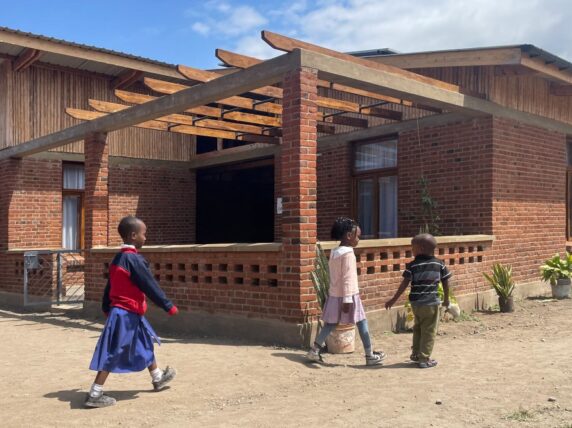Re-evaluating approaches to malaria elimination in Africa: prioritising partnerships for progress
With over 20 years’ experience in healthcare delivery, public health and operational research on communicable diseases in Africa and Asia, I recognise the inherent complexity of malaria.
The disease itself is multifaceted, from its pathogenesis to the wide range of clinical symptoms. The solutions required are equally intricate, requiring integration and tailoring to diverse settings. The threats to progress in the global fight against malaria are numerous, including addressing the growing challenges of drug resistance, and the direct and indirect effects of climate change.
This month, the Malaria Ministerial Conference, co-hosted by the World Health Organization (WHO) and the Government of Cameroon, was held in Yaoundé. Ministers of Health from 11 African countries with the highest burden of malaria signed the Yaoundé declaration committing to end malaria deaths.
According to the World Malaria Report (2023), malaria deaths in 11 ‘High Burden High Impact’ countries rose from 414,000 in 2019 to 426,000 in 2022, accounting for 73 percent of global malaria deaths in 2022 — with just over half of all deaths occurring in four countries. Given the concerning mortality trajectories, the conference provided a critical platform to bring together global malaria partners, funding agencies, civil society organisations and other key stakeholders.
Sustaining progress in malaria elimination, particularly in settings of stable malaria transmission, is becoming more complex. This is due to the nature of malaria transmission dynamics and the emergence of threats that currently include insecticide resistance, drug resistance, invasive mosquito species, and climate variability and change. The collective successes of the past few decades have been largely based on scaling up for impact. With high resurgent potential, we cannot take the foot off the pedal in trying to achieve high, effective coverage that buttresses the value of the subnational tailoring approach to intervention mixes based on malaria risk stratification.
I came away from my time in Yaoundé asking, how do we break down this complex situation and how does Malaria Consortium continue to add value? Creating more impact will likely require modular approaches with relevant partnerships and communities of practice. The contribution that technical organisations like Malaria Consortium bring to the table is invaluable, but we need partnerships beyond the spectrum of traditional stakeholders who are willing to continuously re-evaluate and simplify our approaches.
As we face existing and emerging threats to progress, our ability to adapt will be essential. In this regard, I have outlined several ways in which I feel we must now work in partnership to advance the bigger picture of malaria elimination.
Maintaining an elimination focus
While the WHO’s refocusing on mortality reduction is promising, we must not lose sight of malaria elimination as the long-term strategy. The WHO’s Global Technical Strategy for Malaria (2016–2030) provides a framework for bringing down mortality and morbidity and continuing to reduce transmission in high-burden countries.
Many lessons can be learnt from Southeast Asia, where malaria elimination is in the ‘last mile’ phase. Partnerships such as the South-South learning exchange, which is designed to strengthen capacity in preparedness for arboviruses, have a key role to play in embedding learning in the continuum to malaria elimination.
Innovative financing
We know that more funding is needed, but the traditional funding sources dedicated to ending malaria deaths in sub-Saharan Africa — including the U.S. President’s Malaria Initiative (PMI) and the UK’s Foreign, Commonwealth & Development Office — are reaching their limits. We need to determinedly explore avenues for new financing, including domestic funding from governments, public-private-philanthropic partnerships, and harnessing philanthropy and private sector contributions. The dialogue on funding allocation must be grounded in country-level strategies and evidence-based decision-making.
Addressing emerging threats
The threat of drug resistance is a major and urgent concern that requires a strategic, country-level and regional response, situated within an elimination strategy. We cannot contain resistance, as our ability to detect it is only as good as our diagnostic and surveillance capacity.
Instead, we must refocus on the rational use of quality antimalarials to ensure the longevity of the limited compounds available for prevention and treatment. Examples of partnerships led by the Innovative Vector Control Consortium (IVCC) and Medicines for Malaria Venture (MMV) offer opportunities to tackling insecticide and antimalarial drug resistance with end-to-end approaches. Other partnerships that foster high community acceptance and use in all frontiers of access to diagnostics and medicines need swift attention.
Strengthening surveillance and adaptive management
It is accepted that we must support countries at the national and subnational levels to own their malaria strategies, utilise quality data for decision-making and adapt their approaches accordingly. Improving the quality of routine health and related data is essential for decision-making along the information chain.
This requires capacity development to support subnational implementers to use local data for decision-making and tailor interventions to specific contexts. Evaluations should include the overall effectiveness of malaria programmes, in addition to individual interventions, to enable an adaptive management approach to malaria programmes.
Maintaining focus on the Sustainable Development Goals
Finally, we must not lose sight of the Sustainable Development Goals as the foundation for our progress. Even if we don’t have all the answers now, partnerships that allow us to pool resources and expertise across organisations, countries and regions are crucial to making tangible progress.
The path to ending malaria in sub-Saharan Africa, and globally, requires a concerted effort to break down the complexity of the challenge, foster diverse partnerships and continuously adapt our approaches. By harnessing our collective expertise and resources, we can overcome the obstacles and achieve the long-term goal of malaria elimination.
This blog was originally published on the Malaria Consortium website.
Category
News & ViewsThemes
Global health



